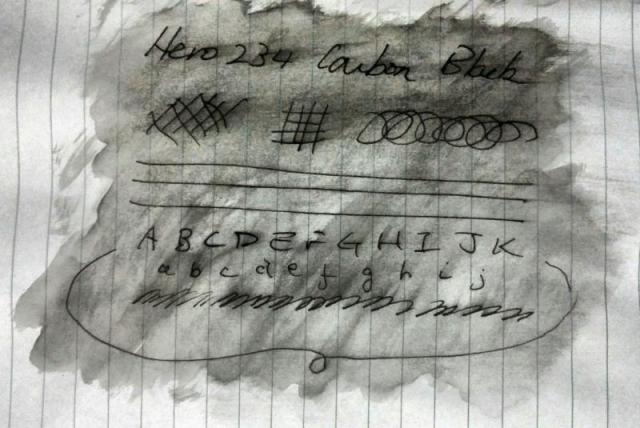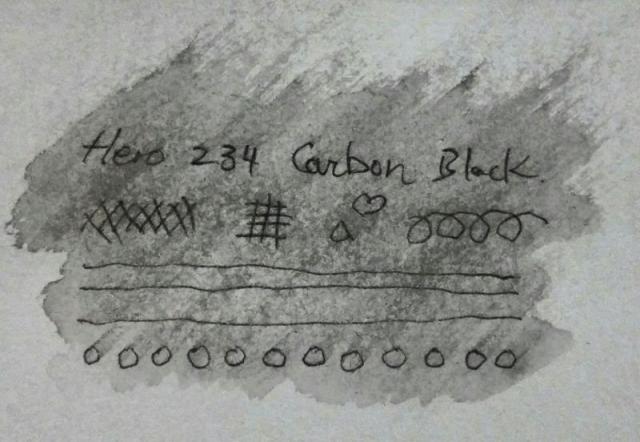Search the Community
Showing results for tags 'hero 234'.
-
In short: goal of the test : to find the ink that fades least over the timemethod: 2 summer months exposure of the ink samples on the kitchen windowpaper: smooth and non-absorbing, durable Clairefontaine EUROPA Notemakercontrol ink: Pelikan 4001 Royal Blue, known to fade quickly when exposed to the sunlight Results of the test: HERO 234: pros: no fading over time (pigmented), true black, no shading, pretty water-resistant, defined line, no bleed-through on worse quality paper cons: dries in pens (especially in caps that are not completely airtight), high maintenance - pens need to be cleaned regularly, very thick Noodlers Black: pros: no significant fading over time, pretty water-resistant, easy maintenance, no bleed-through on worse quality paper, quick drying time cons: not true black (black brownish gray), shading, sometimes dry although no flow issues, no skipping Diamine Jet Black: pros: resists pretty well fading over time, super easy maintenance, no bleed-through on worse quality paper, quick drying time cons: not black (blue teal gray), shading, dry on the paper, dry flow issues possible, no water-resistance Pilot Black bottle 350ml: pros: excellent flow - very wet ink, deep black color (sometimes gray), beautiful shading cons: fades significantly, bleed-through on worse quality paper, less water-resistant
- 8 replies
-
- noodlers black
- hero 234
- (and 3 more)
-

Hero 234 Carbon Black ~ Water Resistance Test
Mech-for-i posted a topic in China, Korea and Others (Far East, Asia)
a few days ago I was lounging over at the Ink forum and some of our fellow memebers express their concern that they can no longer get their needed permanent black , the fabled Platinum Carbon Black. And I though to myself, hey others made permanent ink also and having some time on hand I dedicate some time to investigate how one of the old formula work out, namely the Hero 234 CArbon Black. The test is not anything scientific and only trying to mimic how the ink deal with real life accidents; and here's the result : * Test no.1 is to mimic artist use of ink , Canson 180g Watercolor paper was used, text was put onto the paper, and let sit for 10 min, then smeared with waterbrush, excessive water blotted with facial tissue * Tesat 02 is to mimic having water spilled when doing normal daily writing, Kokuyo Gambal notebook paper, procedure same as test 01 * Test 03 is to mimic accidental water damage when dealing with document well finished, text was put onto paper, and let dry overnight, then is immersed and left in water for 30 minutes, paper used is engineer's stenograph paper ( very fine smooth surface, very light grade ) * Tesat 04 is to mimic water damage in storage, same paper and procedure as test 03, again let dry overnight, then smear with water brush then let it go under running water for 30 min. I say the result speak for itself. It Also show the one character that this old formula had, its slow drying property, as depicted in Test 01 and 02. As side note, Hero had actually 4 different kind of carbon ink, the 84, 214, 234, and 440; and also a non carbon permanent black, the 254. The 234 as picked simply because its the only vintage ink between the lot and having some interesting property. Its more formulated like a calligrapher's ink than fountain pen ink in that it had very high carbon content and that it do use ( plant based ) resin. In fact on its packaging its proclaiming suitable for calligraphy ( by that the made mean small text Chinese brush and pen calligraphy ). ITs known to clog pens if one do not use the pen inked up frequent enough. I've used this ink since way back as a school kid and what more can one ask for a bottle of 55ml which only cost say 3.00 to 4.00 US- 4 replies
-
- ink
- carbon ink
-
(and 3 more)
Tagged with:






